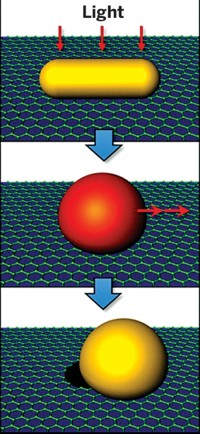Advertisement
Grab your lab coat. Let's get started
Welcome!
Welcome!
Create an account below to get 6 C&EN articles per month, receive newsletters and more - all free.
It seems this is your first time logging in online. Please enter the following information to continue.
As an ACS member you automatically get access to this site. All we need is few more details to create your reading experience.
Not you? Sign in with a different account.
Not you? Sign in with a different account.
ERROR 1
ERROR 1
ERROR 2
ERROR 2
ERROR 2
ERROR 2
ERROR 2
Password and Confirm password must match.
If you have an ACS member number, please enter it here so we can link this account to your membership. (optional)
ERROR 2
ACS values your privacy. By submitting your information, you are gaining access to C&EN and subscribing to our weekly newsletter. We use the information you provide to make your reading experience better, and we will never sell your data to third party members.
Analytical Chemistry
Nanohole Sensor Could Make Biomolecule Detection Easy And Affordable
Biosensors: Researchers quickly detect proteins by using a standard microscope to spot light shining through an array of nanosized holes
by Prachi Patel
February 27, 2014

A new easy-to-make sensor could allow researchers to quickly detect pathogens and disease-related proteins using a common lab microscope. The device consists of an array of nanosized holes that trap the scientists’ biomolecule of choice (ACS Photonics 2014; DOI: 10.1021/ph400111u). The sensor could be part of a compact, affordable diagnostic tool that an untrained person could use in clinics and rural settings, its developers say.

Other groups have developed sensors based on nanohole arrays in metal films. These sensors detect molecules via a phenomenon called surface plasmon resonance. Researchers shine light on the films, which excites electrons in the metal, and then monitor the resulting emitted light to look for slight shifts in wavelength caused by target molecules binding to the holes. Measuring such a tiny shift requires costly spectrometers as well as arrays with 200- to 300-nm-wide holes that are nearly identical in size and shape, which are difficult to fabricate consistently.
Richard C. Willson, Jiming Bao, and their colleagues at the University of Houston devised a simpler technique that depends instead on light just passing through nanoholes. For this, they switch to holes that are more than 500 nm in diameter and spaced by at least a micrometer. Bao uses a low-cost technique called laser interference lithography to make large arrays of the holes in 30-nm-thick gold films deposited on a glass substrate. Light shining on the array passes through each hole, appearing as a bright spot when observed from the other side.
To detect specific target molecules, the researchers first attach antibodies for the molecules on the glass surface in the nanoholes. When they apply the test sample to the array, some of the molecules get trapped in the nanoholes. Next, they add an enzyme that reduces silver ions in the surrounding solution to form solid silver clusters around the captured molecules. The clusters block the light passing through the hole, so that any hole containing a target molecule appears dim or completely dark.
“You could read the nanosensor using a cellphone camera with a relatively inexpensive lens,” Willson says.
With image analysis software, they counted the number of blocked holes in the arrays, which is proportional to the target molecule’s concentration. As a proof of concept, the researchers showed they could use microscope images of the arrays to detect an enzyme found in egg whites at a concentration as low as 0.1 ng/mL.
The researchers can monitor 10,000 nanoholes at the same time using an optical microscope. Instead of detecting a single compound, researchers could fabricate the chips so that small groups of holes within the array could detect different molecules at the same time, making this a high-speed tool for detecting multiple disease-related molecules or toxins.
Sang-Hyun Oh at the University of Minnesota, Twin Cities, calls this sensor a simple yet clever way to detect multiple target molecules in parallel. If the researchers can demonstrate such parallel detection with high sensitivity, he says, “this platform could find many applications in optical biosensing.”
And the ability to use a conventional microscope for reading the sensor should make using the device easy, says Dale Larson at Draper Laboratory. “Every lab that will be interested in using this technology will have one.”




Join the conversation
Contact the reporter
Submit a Letter to the Editor for publication
Engage with us on Twitter